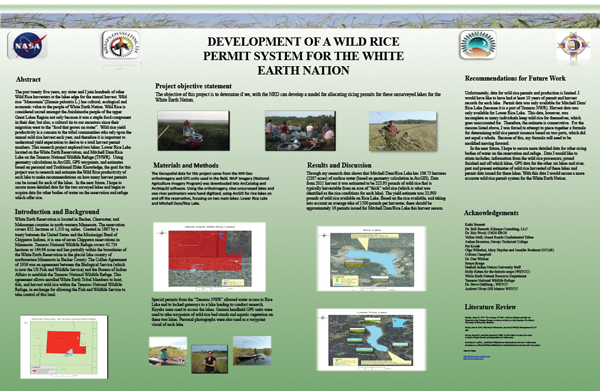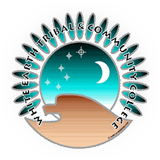
Student Projects
Development of a Wild Rice Permit System for the White Earth Nation
Dianne Kier, 2012
For the past twenty five years, my sister and I have joined hundreds of other wild rice harvesters at the lake's edge for the annual harvest. Wild rice (Zizania palustris L.) has cultural and economic value to the people of White Earth Nation. Wild rice is considered sacred amongst the Anishinaabe people of the upper Great Lakes Region not only because it was a staple food component in their diet, but also a cultural tie to our ancestors since their migration west to the "food that grows on water."

Development of a Wild Rice Permit System for the White Earth Nation. Dianne Kier, 2012
View the full poster in a separate window
Wild rice yield productivity is a concern to the tribal communities who rely upon the annual wild rice harvest, and therefore it is important to understand yield expectation to derive a total number of harvest permits. This research project explored two lakes: Lower Rice Lake, located on the White Earth Reservation, and Mitchell Dam/Rice Lake, on the Tamarac National Wildlife Refuge (TNWR).
Using geometry calculations in ArcGIS, GPS waypoints, and estimates based on personal and Traditional Elder Knowledge, the goal for this project was to research and estimate the wild rice productivity of each lake to make recommendations on how many harvest permits can be issued for each of the lakes. In the near future, I hope to secure more detailed data for the two surveyed lakes and begin to acquire data for other bodies of water on the reservation and refuge which offer rice




